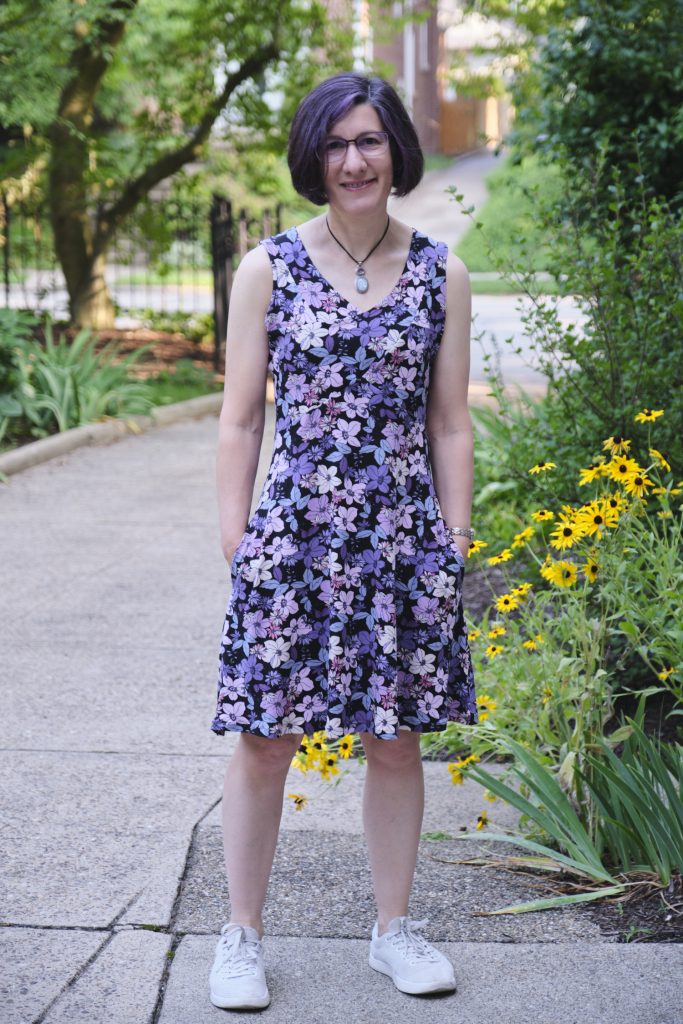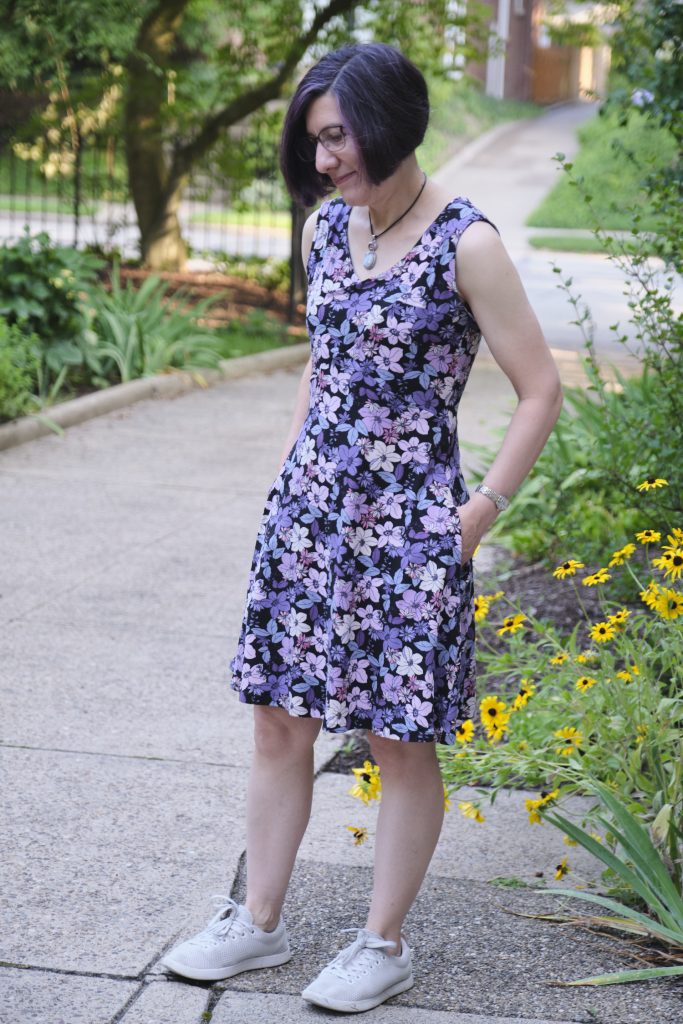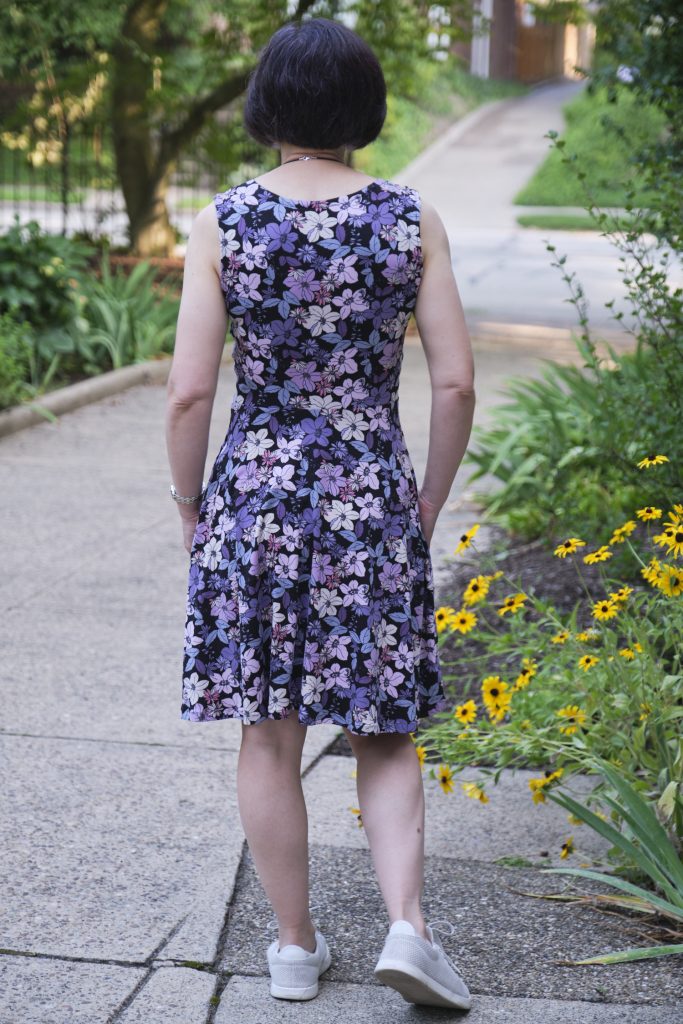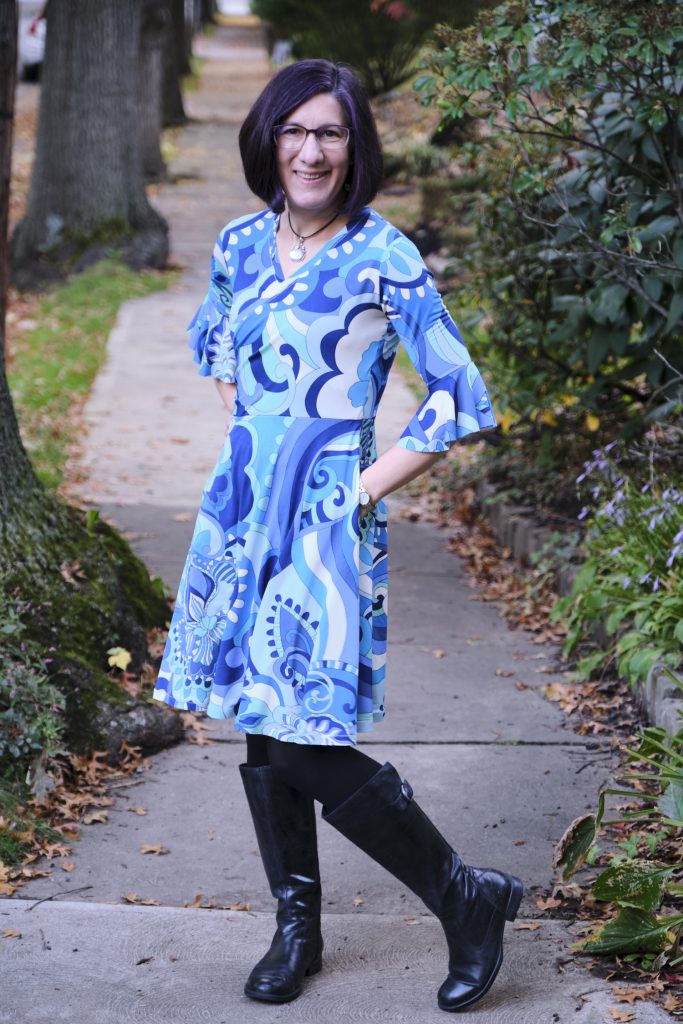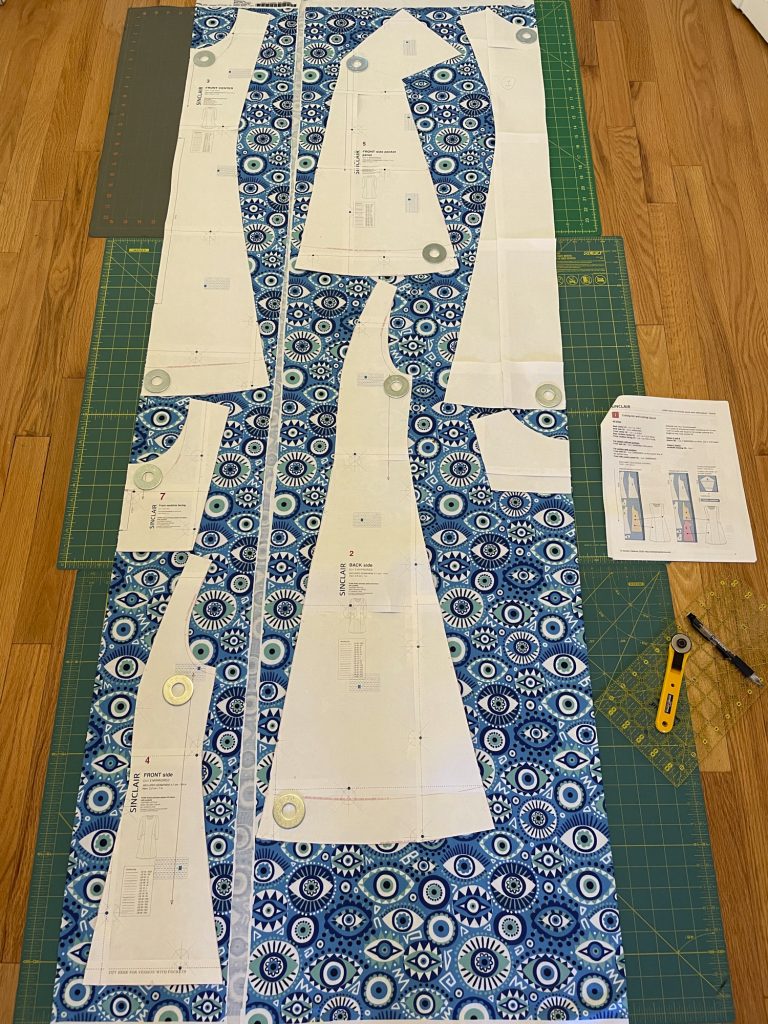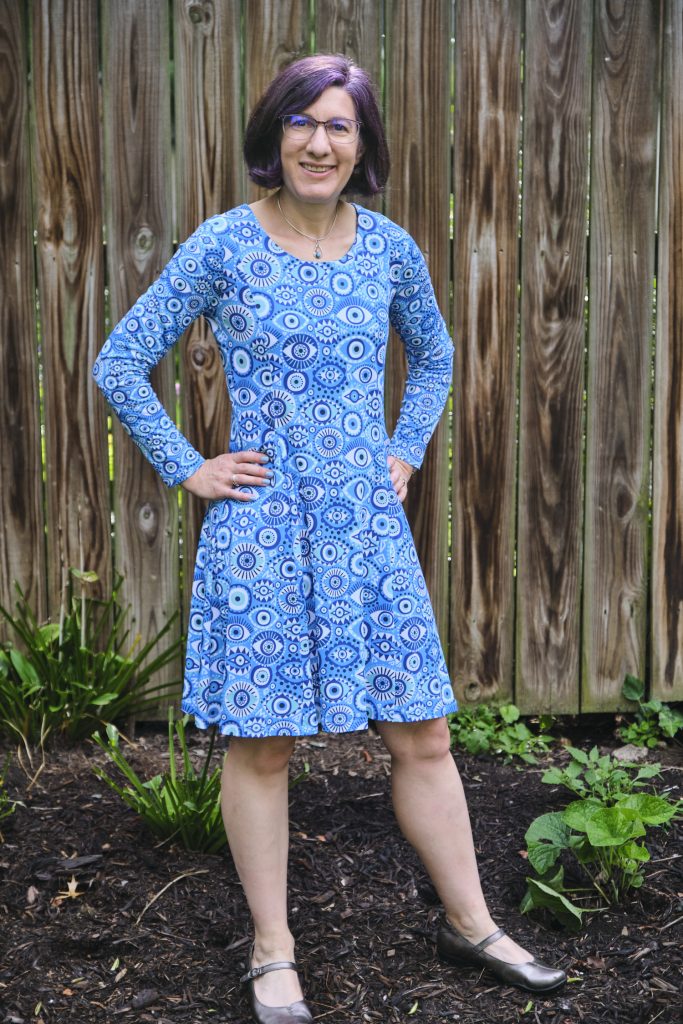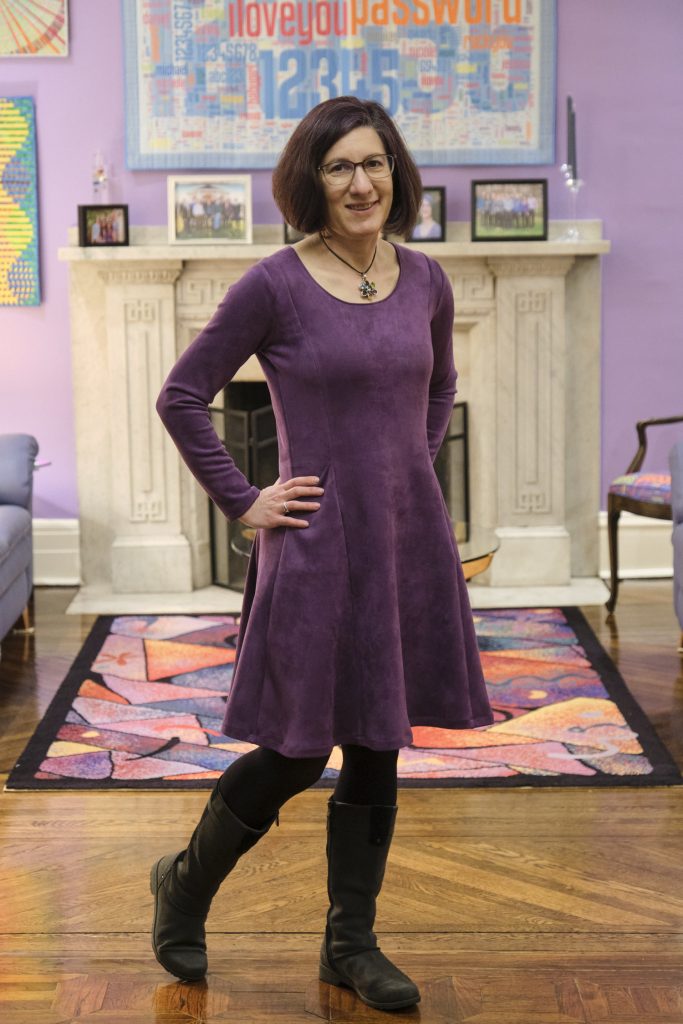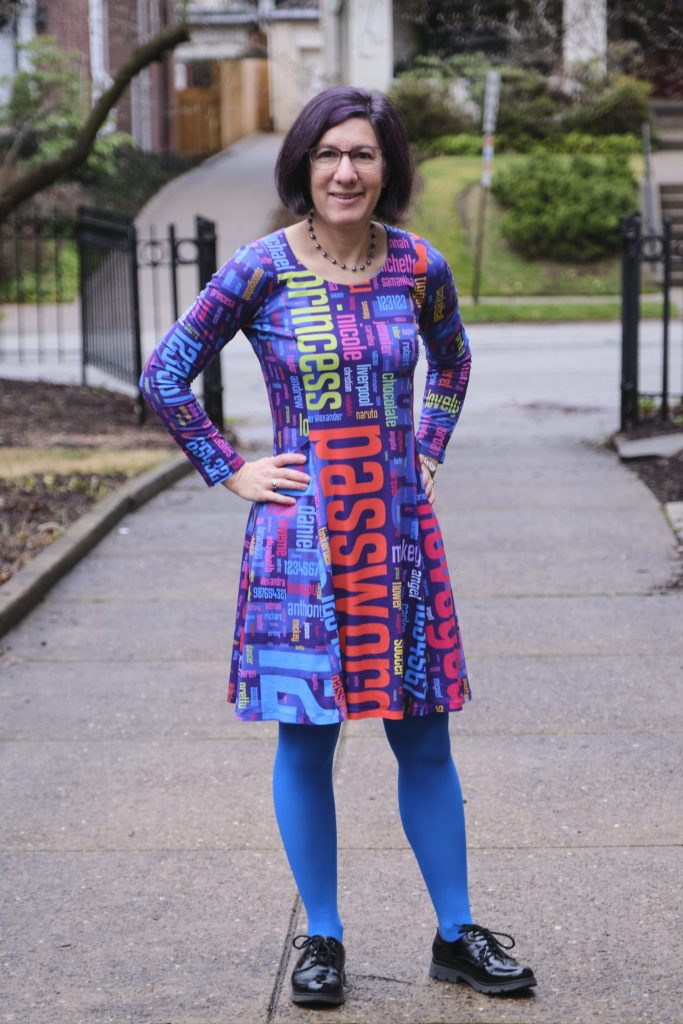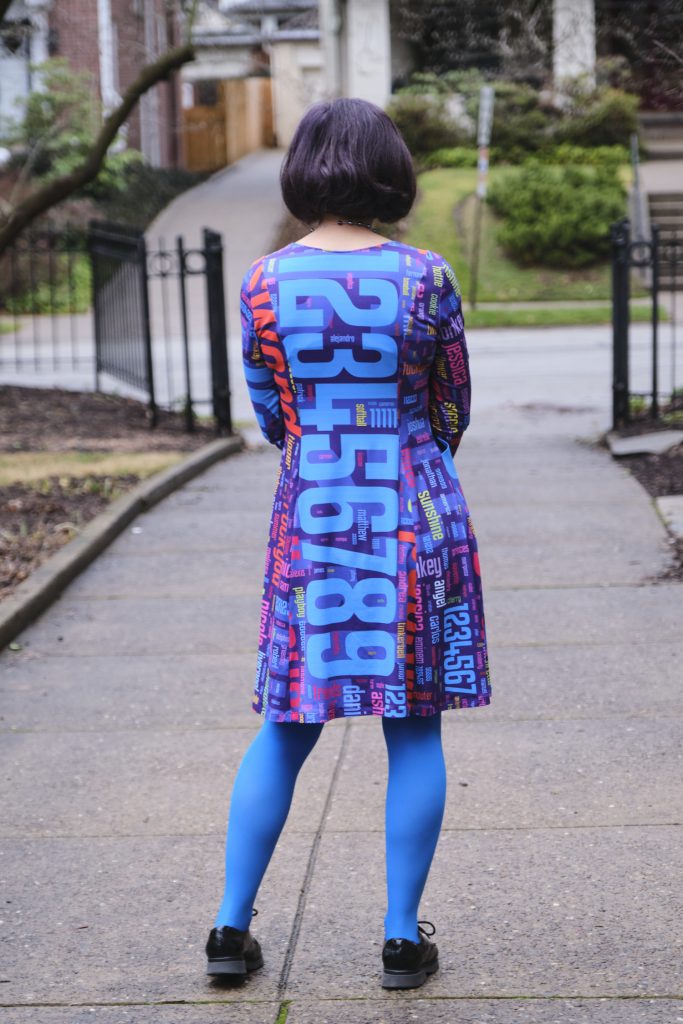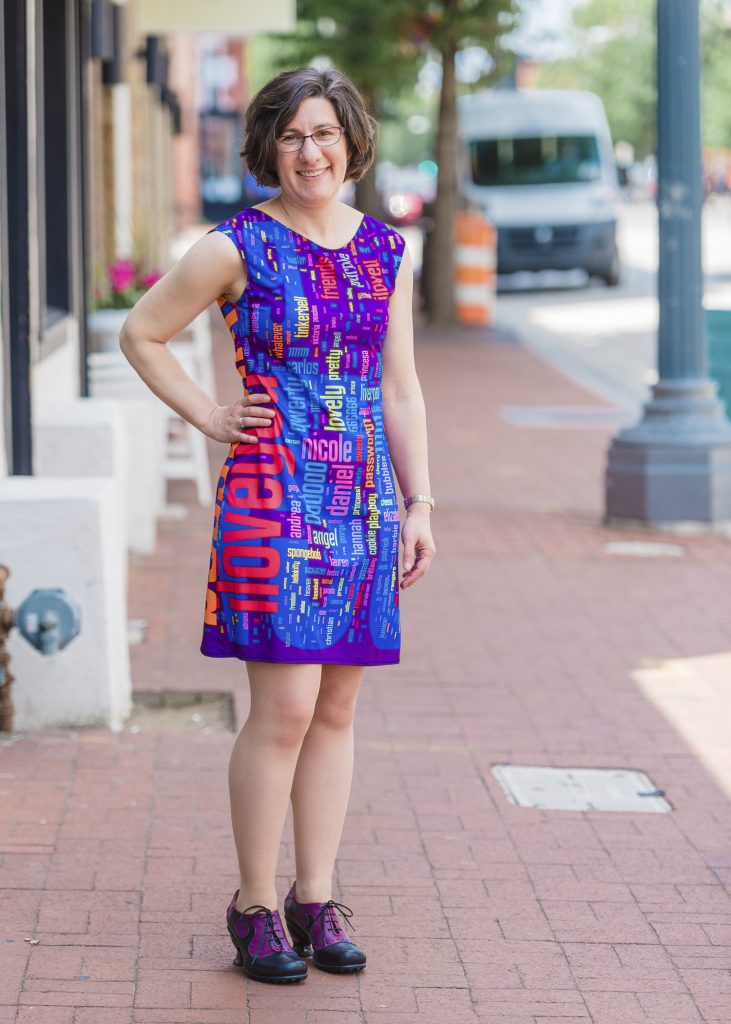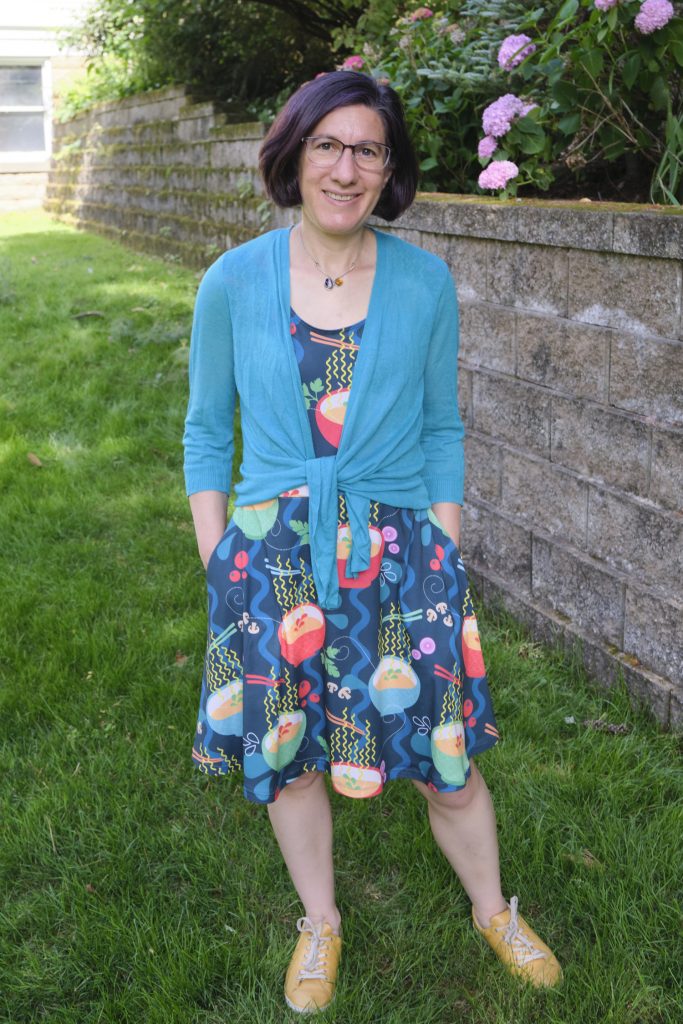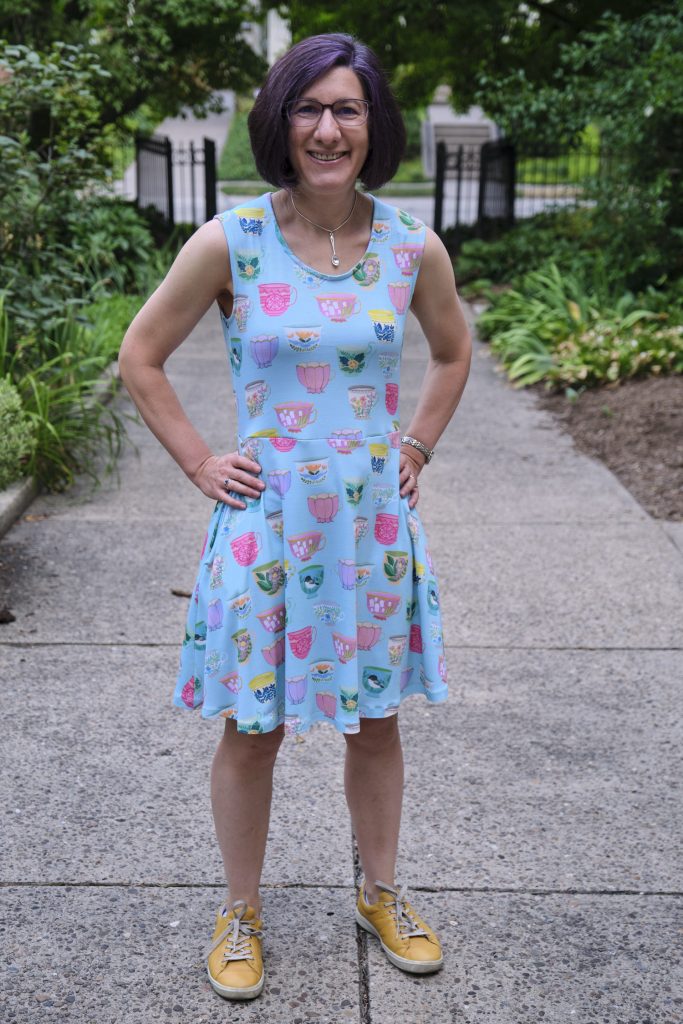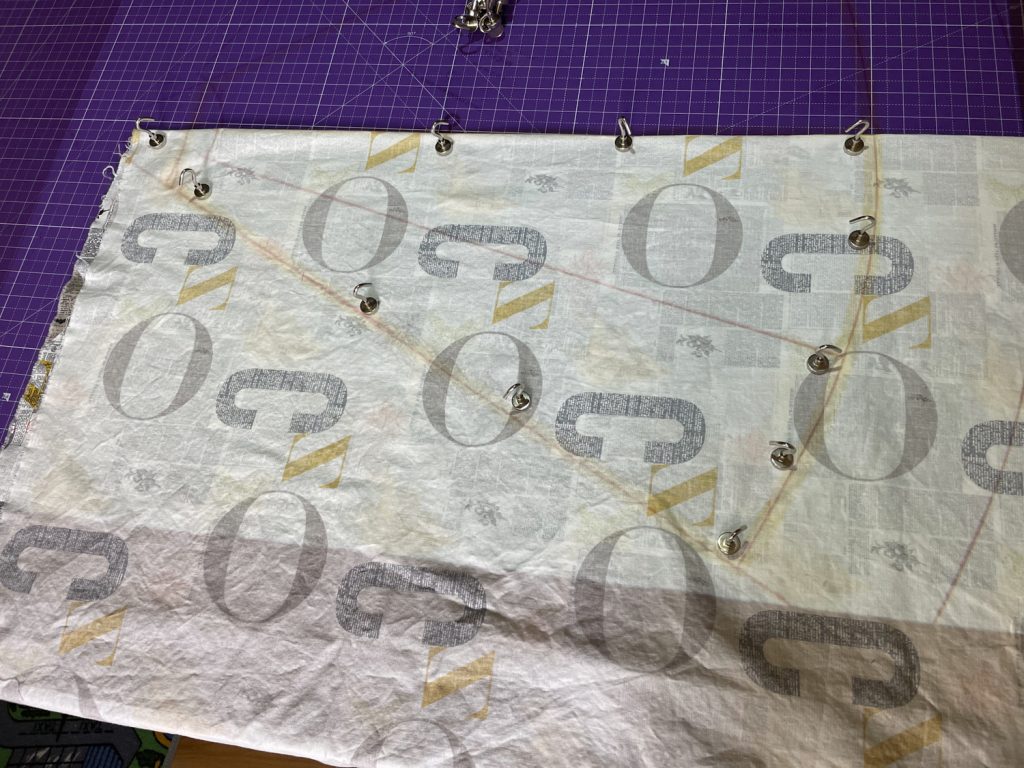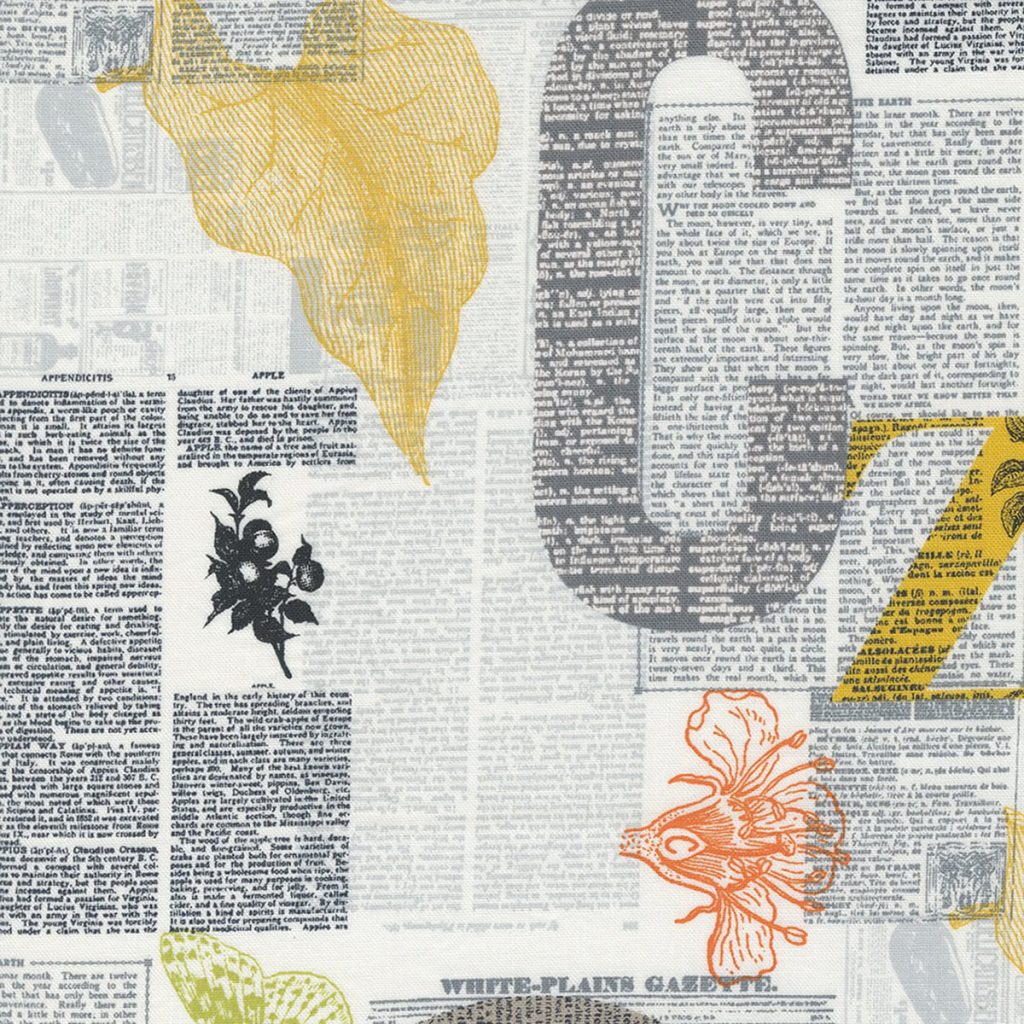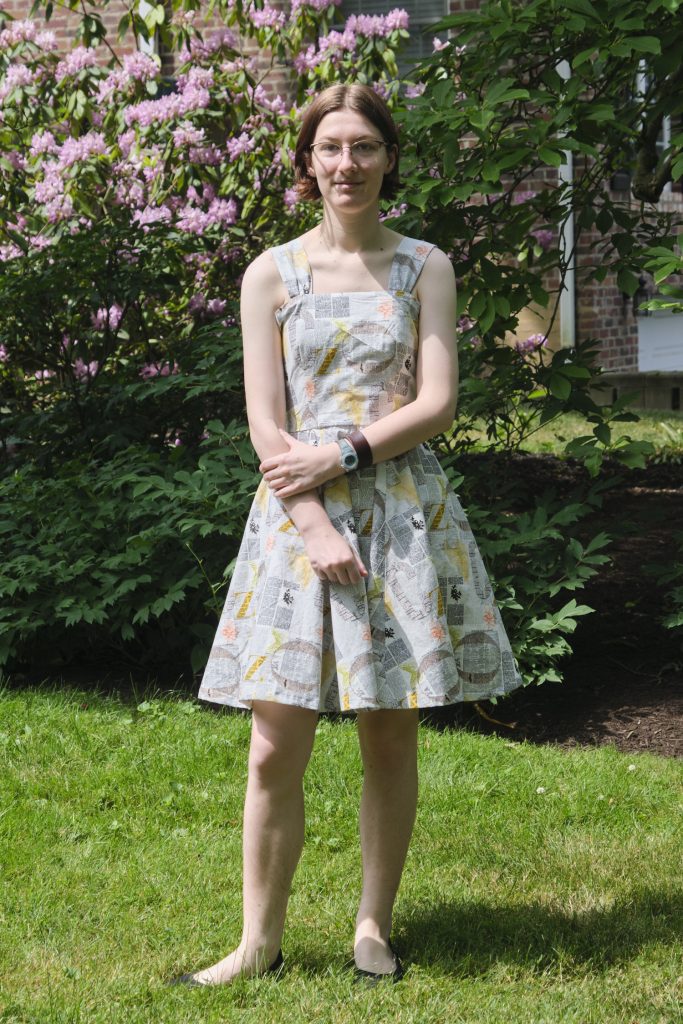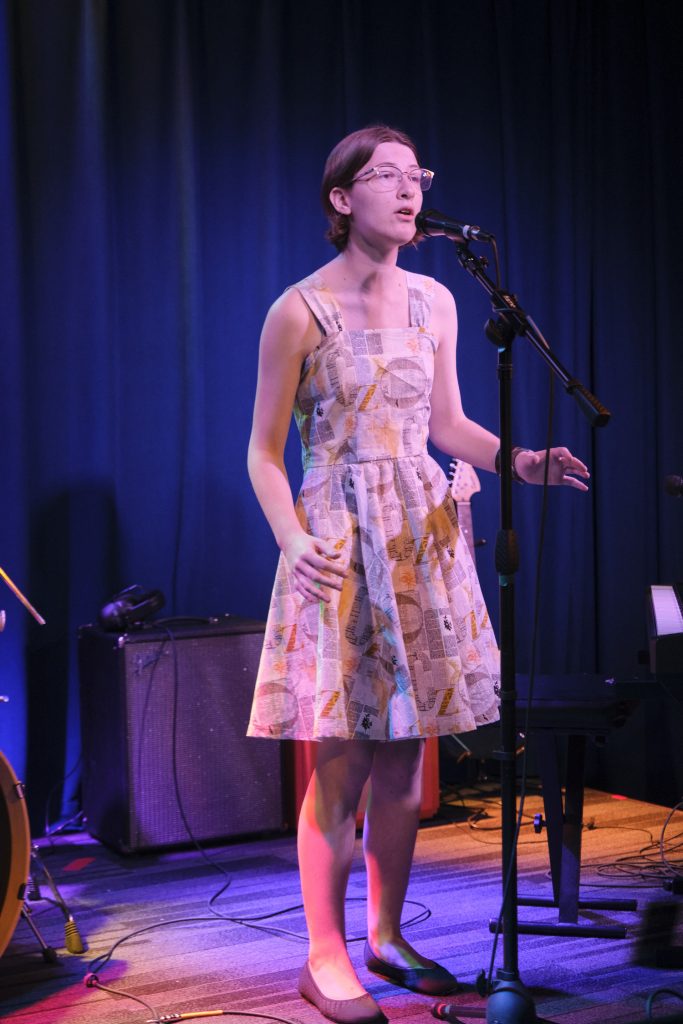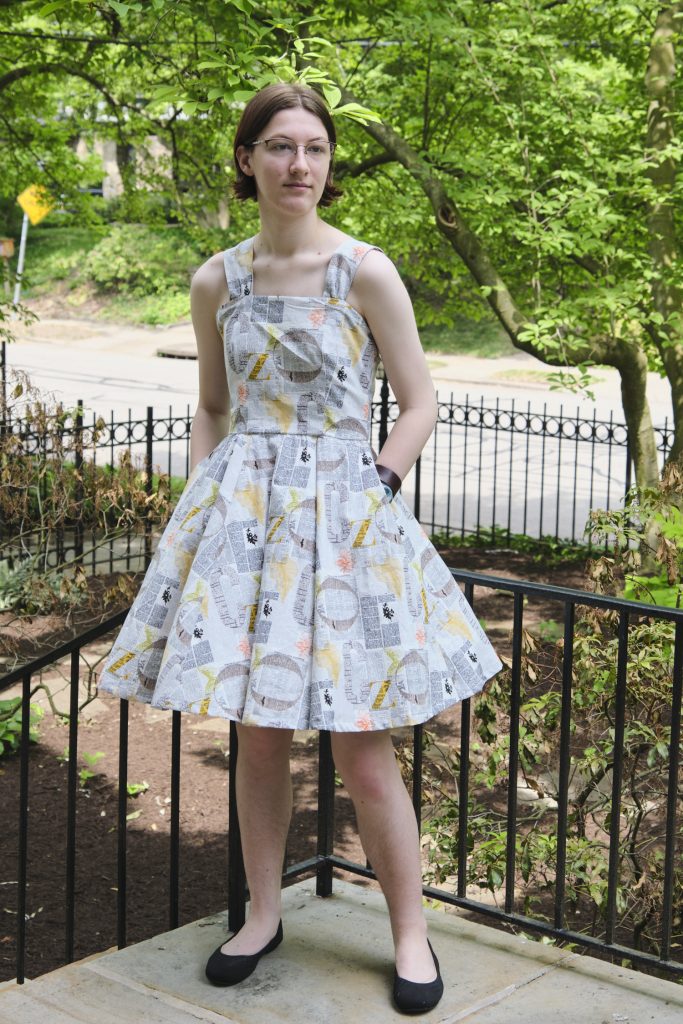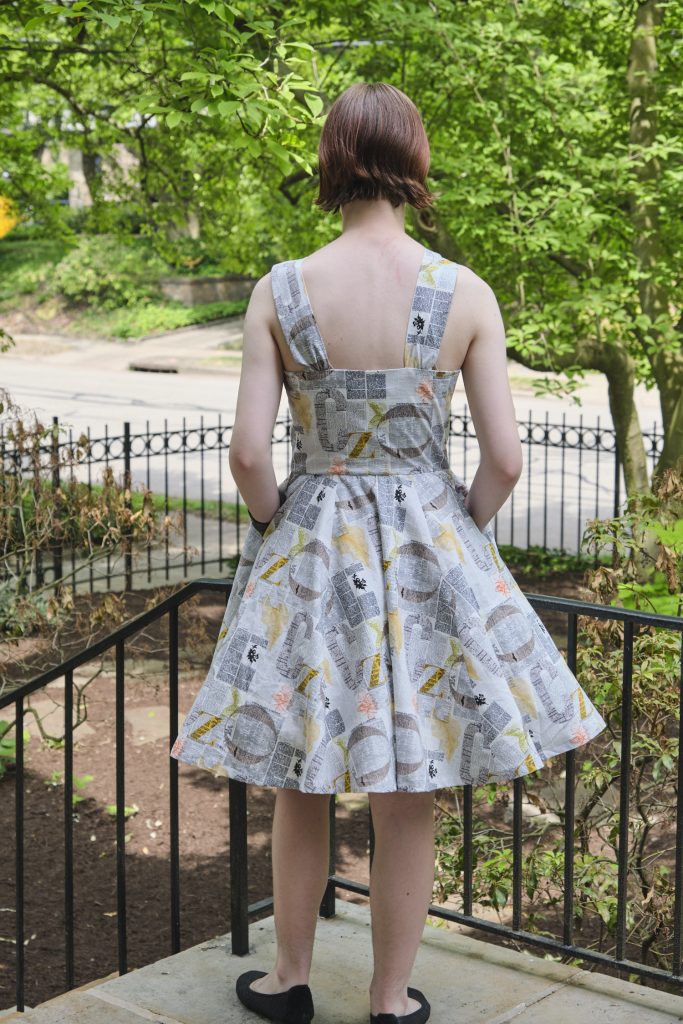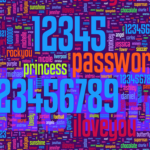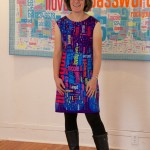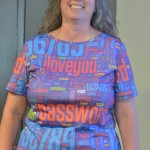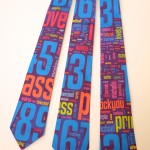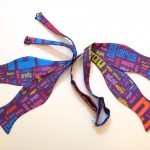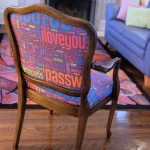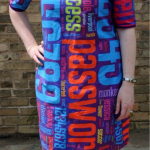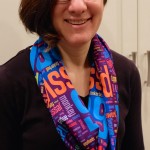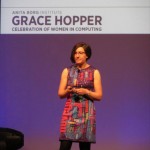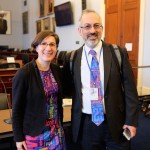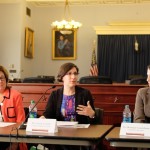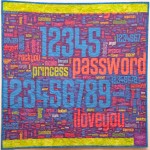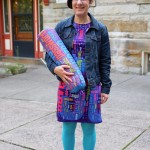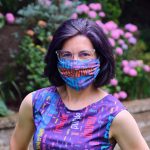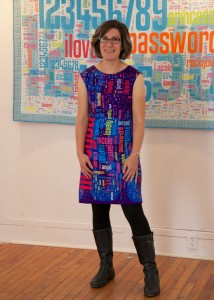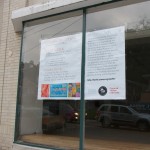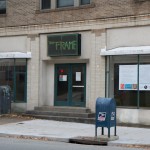I saw the Sinclair Serena crossover knit dress pattern a while ago and was a bit intimidated about sewing the crossover part, which is a bit of a jigsaw puzzle. But I recently was looking for a knit dress pattern that would look great in a full length formal gown, and Serena looked like it could be adapted for this purpose. The gown project will be another story for later, but in the mean time I thought it prudent to sew a short version of this dress with inexpensive fabric to make sure this was going to work. So earlier this month I projected, cut, and sewed Serena in one weekend. Serena is an old pattern without projector files, but I was able to create projector files with pdfstitcher. [Correction: There are projector files, I just some how missed them!]
I used the 4 petite pattern and cut the skirt 1 inch below the above-the-knee length, making it sit exactly at the knee on me. I selected a floral double-brushed polyester for this dress. This is a light-weight, stretchy, and inexpensive fabric that’s very comfortable to wear. I looked at photos from others who have made Serena and saw some interesting approaches to color blocking this dress that really highlight the crossover (and/or the bust) and the jigsaw puzzling involved, but my favorites were all made from a single fabric print without any color blocking. Without the color blocking, you an hardly see the crossover, but you still get a lovely fitted top with a skirt that hangs from a point that I think will work really well for a gown.
Of course I made it with the pocket option (and added about an inch to the bottom of the pocket bags to make sure my phone doesn’t fall out of my pockets)! The pockets are great, but I think the openings sit a little low so in the next dress I will probably raise them about 2 inches higher. The pockets flop around when filled since they aren’t attached to anything except the side seams since there is no waistband to attach them too (and even if there was I probably wouldn’t attach them because I don’t like it when pockets distort the waist band), but I think they would flop less if they were attached higher. My favorite dress pockets are still the Alana dress pockets — no flopping or distorting — but that style of pocket only works with princess seams, alas.
The jigsaw puzzle was not actually too difficult to solve, although I do recommend reading the pattern tutorial very carefully and watching that you don’t try to assemble any of the pieces upside down or backwards (I had a couple of close calls). The pattern suggests optionally adding some elastic to the top edge of the v-neck if it doesn’t recover well from a stretch. I tested the recovery as suggested and it seemed fine, so I did not add the elastic. I have a very slight droop in the top layer of the crossover that might have benefited from adding the elastic, or at least a bit of fusible knit interfacing (maybe next time!), but it is subtle. (Later I realized that I actually ended the seam that holds the crossover down too early. Had I brought the same all the way to the center of the crossover it might not have drooped.) There is also optional top stitching that I opted out of, with no regrets. The arm holes are finished with a binding that I didn’t do a great job of attaching, especially on the left side, so the bottom of the armhole flops out a tad. Next time I will need to take more care with positioning and stretching the band. Most of these are issues that probably nobody would notice except me.
Anyway, I’m quite pleased with Serena, and am already planning to make another one soon.

